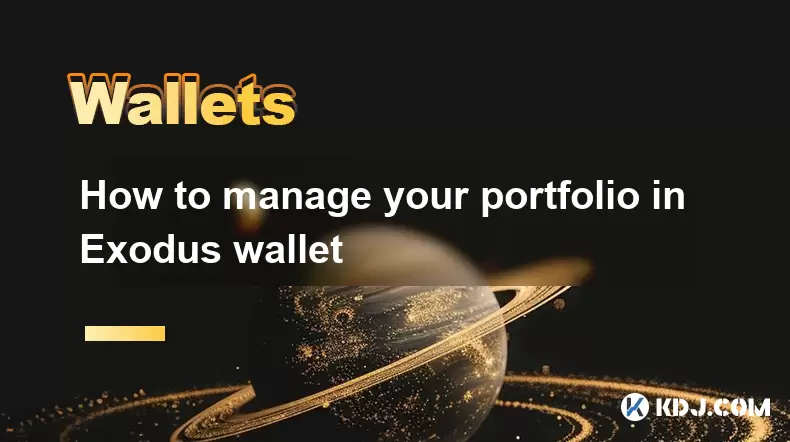-
 Bitcoin
Bitcoin $118600
-2.59% -
 Ethereum
Ethereum $4282
-0.42% -
 XRP
XRP $3.129
-4.21% -
 Tether USDt
Tether USDt $0.0000
0.01% -
 BNB
BNB $805.4
-1.80% -
 Solana
Solana $174.3
-5.77% -
 USDC
USDC $0.9998
-0.01% -
 Dogecoin
Dogecoin $0.2230
-6.33% -
 TRON
TRON $0.3466
1.70% -
 Cardano
Cardano $0.7745
-5.73% -
 Chainlink
Chainlink $21.37
-3.53% -
 Hyperliquid
Hyperliquid $42.93
-7.25% -
 Stellar
Stellar $0.4324
-4.94% -
 Sui
Sui $3.660
-7.17% -
 Bitcoin Cash
Bitcoin Cash $591.6
2.72% -
 Hedera
Hedera $0.2467
-7.04% -
 Ethena USDe
Ethena USDe $1.001
0.00% -
 Avalanche
Avalanche $22.92
-6.14% -
 Litecoin
Litecoin $118.8
-3.79% -
 Toncoin
Toncoin $3.378
-0.46% -
 UNUS SED LEO
UNUS SED LEO $9.011
-1.15% -
 Shiba Inu
Shiba Inu $0.00001294
-5.81% -
 Uniswap
Uniswap $11.24
0.53% -
 Polkadot
Polkadot $3.870
-6.16% -
 Cronos
Cronos $0.1662
-1.68% -
 Dai
Dai $1.000
0.02% -
 Ethena
Ethena $0.7915
-5.62% -
 Bitget Token
Bitget Token $4.414
-1.65% -
 Monero
Monero $259.3
-3.85% -
 Pepe
Pepe $0.00001120
-8.29%
What cryptocurrencies does my Ledger Nano X support?
The Ledger Nano X supports a wide range of cryptocurrencies, but the list evolves; always check the official Ledger website for the latest supported assets.
Mar 30, 2025 at 10:36 am

The Ledger Nano X is a popular hardware wallet known for its robust security and relatively extensive cryptocurrency support. However, the exact number and types of cryptocurrencies supported are constantly evolving. This is because Ledger integrates new assets as they gain traction and meet certain criteria for security and community adoption. It's crucial to always check the official Ledger website for the most up-to-date list.
Understanding Ledger Live and App Support
The Ledger Nano X interacts with your cryptocurrencies through the Ledger Live desktop application and individual cryptocurrency apps that you install on the device itself. This means that while the device itself has the capacity for many assets, you need to install the specific app for each cryptocurrency you want to manage on the device. This modular approach allows Ledger to maintain security and add support for new assets without requiring a complete device firmware update.
Accessing the Supported Cryptocurrency List
To find the most current list of supported cryptocurrencies, you should always refer to the official Ledger website. Navigating to their support section or their specific product page for the Nano X will provide a comprehensive list. This list is dynamic and regularly updated, so relying on unofficial sources might lead to outdated or inaccurate information. Always trust the official Ledger channels.
Installing Apps for Supported Cryptocurrencies
Once you've identified the cryptocurrencies you want to manage on your Ledger Nano X, you need to install the corresponding apps. This is a straightforward process done through the Ledger Live application.
- Open Ledger Live and connect your Ledger Nano X.
- Navigate to the "Manager" section within the Ledger Live application.
- Browse the available apps and locate the app for the cryptocurrency you wish to add.
- Click "Install" to download and install the app onto your Ledger Nano X. This process might take a few minutes depending on your internet connection.
- Once installed, the app will appear in your Ledger Live dashboard, allowing you to manage your assets.
Beyond the Official List: Understanding Compatibility
While Ledger provides a comprehensive list of officially supported cryptocurrencies, it's important to understand that the concept of "support" has nuances. Official support means that Ledger has verified the app's security and functionality, ensuring a seamless user experience. However, some users might find that certain tokens or assets, while not officially supported, can still be managed through third-party applications or specific processes. This is generally not recommended for security reasons. Sticking to officially supported assets is the safest practice.
Categorizing Supported Cryptocurrencies
Ledger supports a wide range of cryptocurrencies, spanning different blockchain technologies and asset classes. These generally fall into categories like:
- Major cryptocurrencies: Bitcoin (BTC), Ethereum (ETH), Litecoin (LTC), Bitcoin Cash (BCH), etc. These are usually the first assets supported on any hardware wallet due to their widespread adoption and market capitalization.
- ERC-20 tokens: These are tokens built on the Ethereum blockchain and represent a significant portion of the supported assets. The process of adding support for ERC-20 tokens is usually efficient as long as they meet Ledger's security standards.
- Other blockchain assets: Ledger also supports assets built on other blockchains, such as Solana, Polkadot, Cosmos, and many others. The availability of support depends on the maturity and security of the respective blockchain's ecosystem.
Security Considerations: Staying Updated
Maintaining the security of your Ledger Nano X and its associated cryptocurrencies is paramount. Regularly updating your Ledger Live application and the individual cryptocurrency apps is crucial. These updates often include security patches and improvements that protect against emerging threats. Ignoring updates can significantly compromise the security of your assets.
Dealing with Unsupported Cryptocurrencies
If you are interested in managing a cryptocurrency that is not currently supported by Ledger, you have a few options. You could explore other hardware wallets that might offer support for that specific asset. You could also consider using a software wallet, but be aware that this significantly increases the risk of theft or loss of your assets due to software vulnerabilities. Caution is advised when dealing with unsupported assets. The safest approach is to wait for official Ledger support if possible.
Frequently Asked Questions
Q: How often does the list of supported cryptocurrencies on Ledger Nano X update?
A: The list updates regularly, sometimes several times a month, depending on new developments in the cryptocurrency space and Ledger's internal development cycle. It's recommended to check the official Ledger website frequently.
Q: Can I use my Ledger Nano X with all ERC-20 tokens?
A: While Ledger supports a large number of ERC-20 tokens, not all are supported. You must check the official Ledger website to see if the specific ERC-20 token you are interested in is listed as supported.
Q: What should I do if my Ledger Nano X doesn't recognize a cryptocurrency app I've installed?
A: Try reinstalling the app through the Ledger Live manager. If the problem persists, check the Ledger support website for troubleshooting steps or contact their customer support.
Q: Is it safe to use third-party apps to manage unsupported cryptocurrencies on my Ledger Nano X?
A: No, it's generally not recommended. Using unverified third-party apps significantly increases the risk of malware and security breaches. Stick to officially supported apps for optimal security.
Q: My Ledger Nano X shows an outdated app. What should I do?
A: Update the app immediately through the Ledger Live manager. Regular updates are crucial for security and functionality.
Q: Where can I find the most accurate and up-to-date list of supported cryptocurrencies?
A: Always check the official Ledger website. Unofficial sources may provide outdated or inaccurate information. Look for the specific product page for the Ledger Nano X.
Disclaimer:info@kdj.com
The information provided is not trading advice. kdj.com does not assume any responsibility for any investments made based on the information provided in this article. Cryptocurrencies are highly volatile and it is highly recommended that you invest with caution after thorough research!
If you believe that the content used on this website infringes your copyright, please contact us immediately (info@kdj.com) and we will delete it promptly.
- Memecoins, Corporate Treasury, and the New Frontier: A NYC Perspective
- 2025-08-12 14:30:13
- Dogecoin, Presale, Surge: Riding the Meme Coin Wave
- 2025-08-12 11:10:12
- Dogecoin, Tron, and the ROI Reality Check: What's a Crypto Investor to Do?
- 2025-08-12 11:15:12
- Ethereum Layer-2 Scaling Competition Heats Up as ETH Breaks $4K
- 2025-08-12 10:30:12
- China Regulation, Stablecoins, and BNB Presale: Navigating the Crypto Landscape
- 2025-08-12 11:30:12
- Meme Coins, Investment, and Token Burns: What's Hot in 2025?
- 2025-08-12 10:30:12
Related knowledge

How to manage your portfolio in Exodus wallet
Aug 08,2025 at 10:07pm
Understanding the Exodus Wallet InterfaceThe Exodus wallet is a non-custodial cryptocurrency wallet that supports a wide range of digital assets. When...

How to reset your MetaMask password
Aug 08,2025 at 01:28pm
Understanding the MetaMask Password Reset ProcessMany users confuse the MetaMask password with the seed phrase or private key, but they serve differen...

How to buy Dogecoin on MetaMask
Aug 08,2025 at 03:42am
Understanding Dogecoin and MetaMask CompatibilityDogecoin (DOGE) is a popular meme-based cryptocurrency that operates on its own blockchain, originall...

How to switch between networks in Trust Wallet
Aug 09,2025 at 11:07am
Understanding Network Switching in Trust WalletSwitching between networks in Trust Wallet allows users to manage assets across different blockchains, ...

How to set up Face ID for MetaMask
Aug 12,2025 at 02:42am
Understanding Face ID and Its Role in MetaMask SecurityMetaMask is a widely used cryptocurrency wallet that allows users to interact with the Ethereum...

How to set up Face ID for MetaMask
Aug 11,2025 at 09:28am
Understanding Face ID and Its Role in MetaMask SecurityFace ID is a biometric authentication system developed by Apple that uses facial recognition to...

How to manage your portfolio in Exodus wallet
Aug 08,2025 at 10:07pm
Understanding the Exodus Wallet InterfaceThe Exodus wallet is a non-custodial cryptocurrency wallet that supports a wide range of digital assets. When...

How to reset your MetaMask password
Aug 08,2025 at 01:28pm
Understanding the MetaMask Password Reset ProcessMany users confuse the MetaMask password with the seed phrase or private key, but they serve differen...

How to buy Dogecoin on MetaMask
Aug 08,2025 at 03:42am
Understanding Dogecoin and MetaMask CompatibilityDogecoin (DOGE) is a popular meme-based cryptocurrency that operates on its own blockchain, originall...

How to switch between networks in Trust Wallet
Aug 09,2025 at 11:07am
Understanding Network Switching in Trust WalletSwitching between networks in Trust Wallet allows users to manage assets across different blockchains, ...

How to set up Face ID for MetaMask
Aug 12,2025 at 02:42am
Understanding Face ID and Its Role in MetaMask SecurityMetaMask is a widely used cryptocurrency wallet that allows users to interact with the Ethereum...

How to set up Face ID for MetaMask
Aug 11,2025 at 09:28am
Understanding Face ID and Its Role in MetaMask SecurityFace ID is a biometric authentication system developed by Apple that uses facial recognition to...
See all articles

























































































